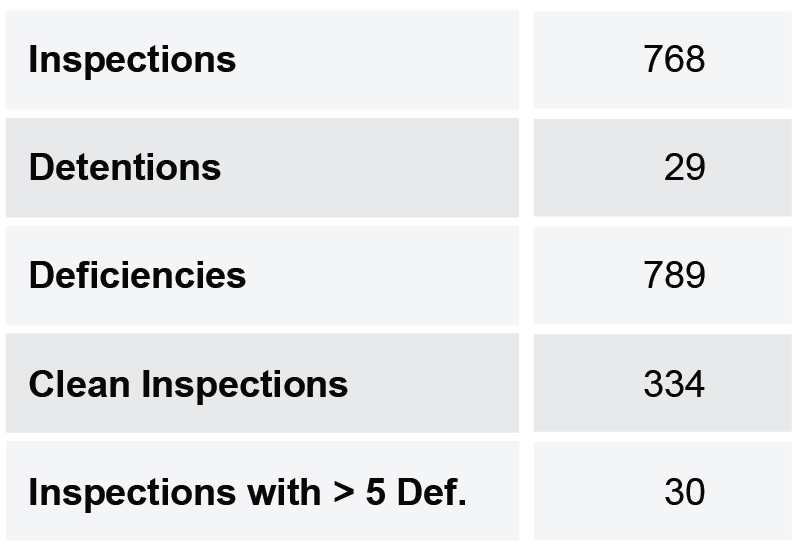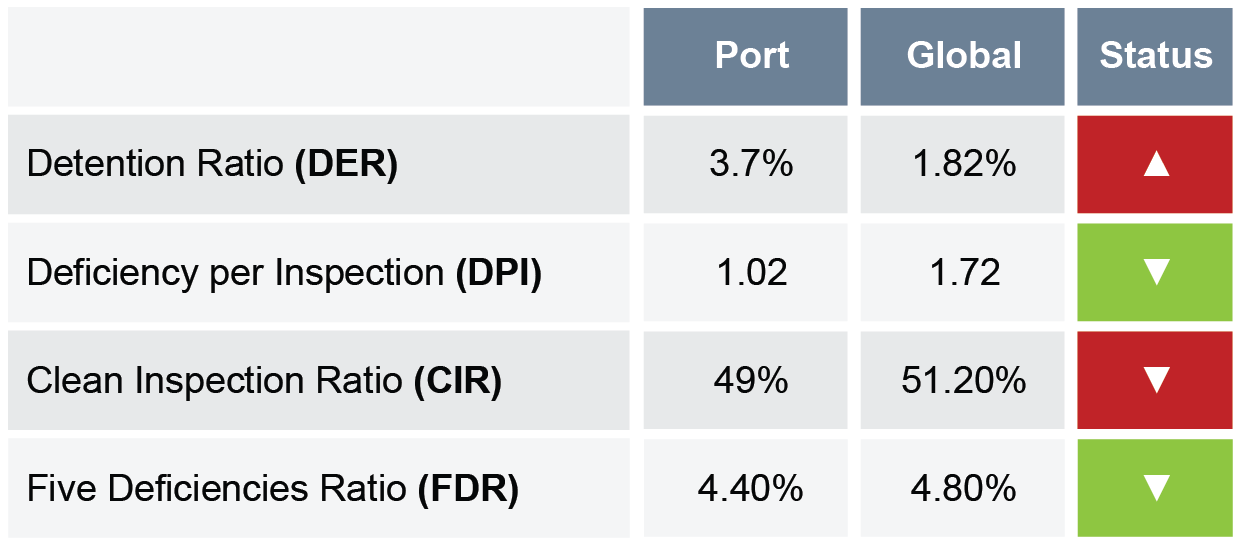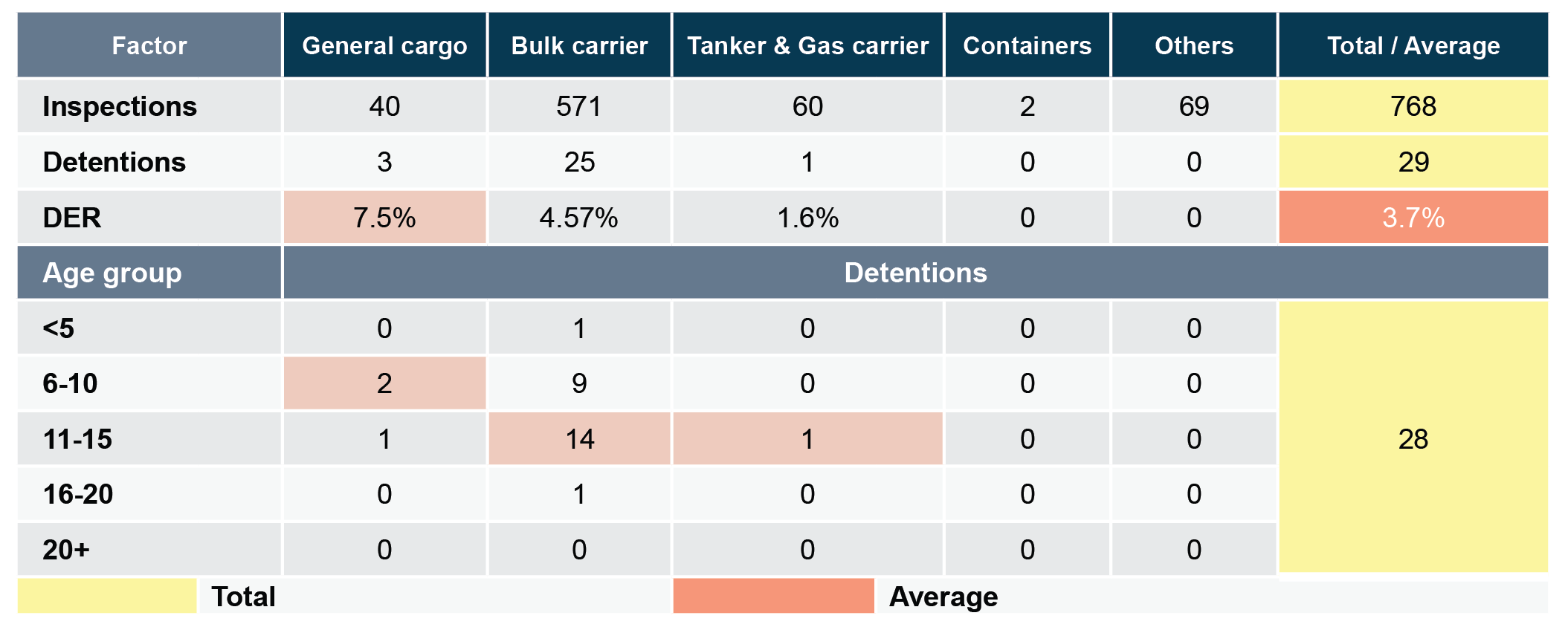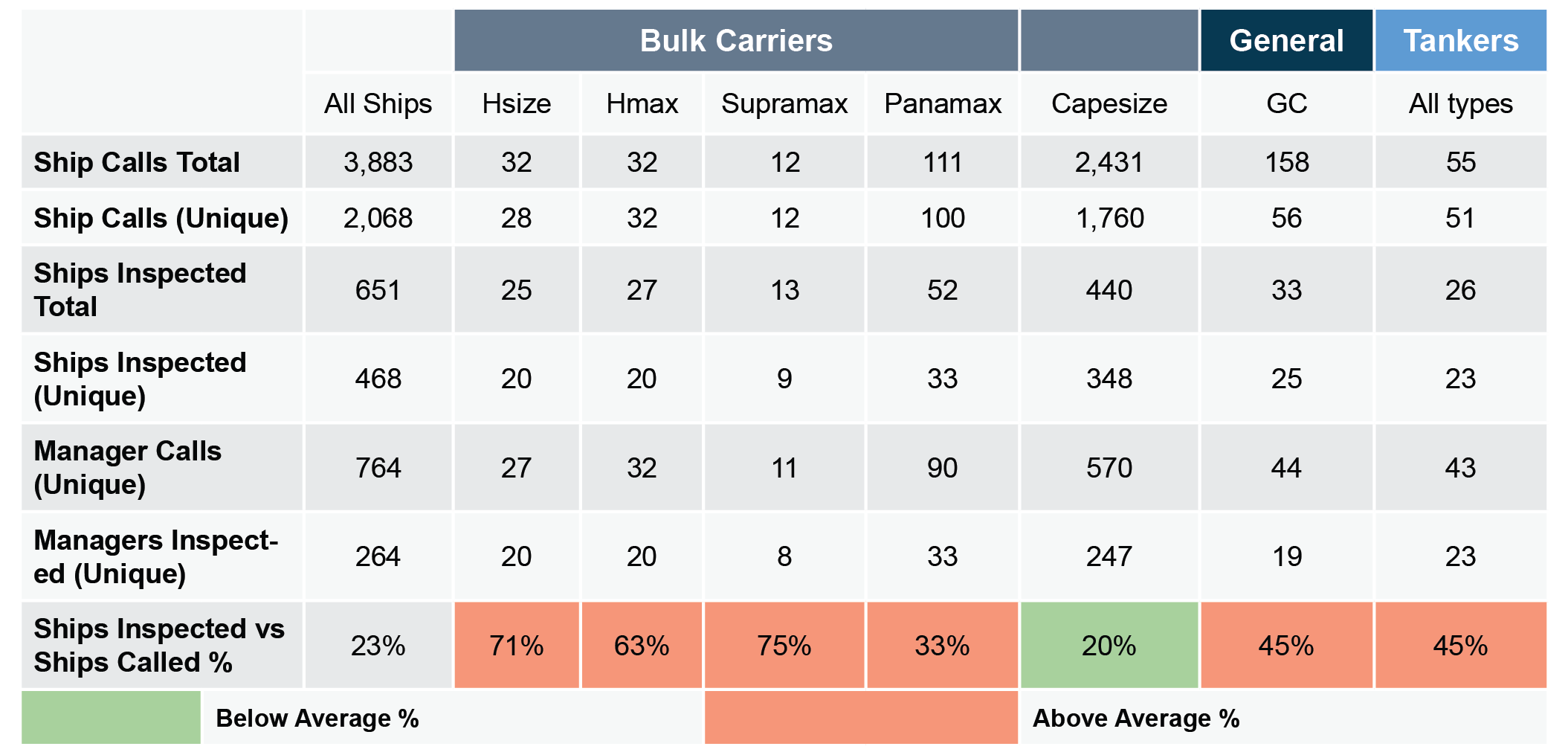Port Hedland PSC Inspections vs Calls – 2021 Overview
This RISK4SEA Report about PSC Inspections vs Calls in Port Hedland for 2021 includes ship type & age detention analysis, ships inspected vs ships called and top 5 deficiency codes.
Key figures

PSC KPIs

Ship Type & Age Detention Analysis

Ships Inspected vs Ships Called

Top 5 Deficiency Codes

Key Findings
- Port Hedland is a challenging port, with a Detention Rate significantly higher than the Global Average.
- Mostly middle aged (11-15 years old) Bulk Carriers were detained during 2021.
- The inspection rate vs ship called is 23%. However, for the most common ship type visiting Port Hedland -Capesize Bulk Carriers- the inspection rate drops to 20%.
- General cargo Ships showed the highest Detention Rate (7.5%) with a rather medium inspection percentage (45%) in respect of ships calls.
- Smaller size Bulk Carriers (Handysize, Handymax, Supramax) have an inspection rate three (3) times higher than other Capes. 7 out of 10 ships of such types calling Port Hedland are subject to inspection.
- From 764 Managers who managed ships calling at the Port, 264 Managers had ships that were inspected, while 65% of managers, managing more than 1,600 ships in total, had no ships inspected.
- Deficiency Code 10116 – Nautical Publications was the most common finding during inspections followed by 03108 – Ventilators, air pipes, Casing.
About RISK4SEA | www.risk4sea.com | Client List https://bit.ly/3L4ulcI
RISK4SEA is a SaaS PSC Intelligence platform, illuminating PSC performance to Prepare/Assess PSC inspections, Benchmark against competition and Automate PSC functions and alerts to eliminate detentions and minimize OPEX.